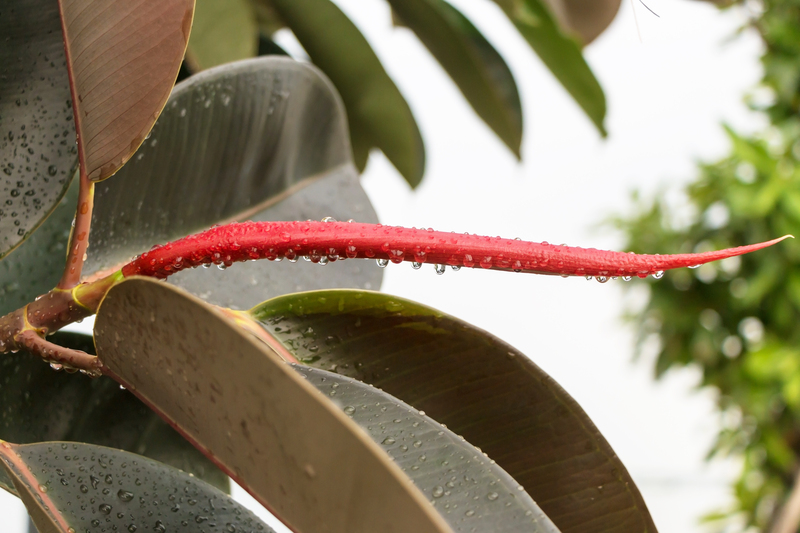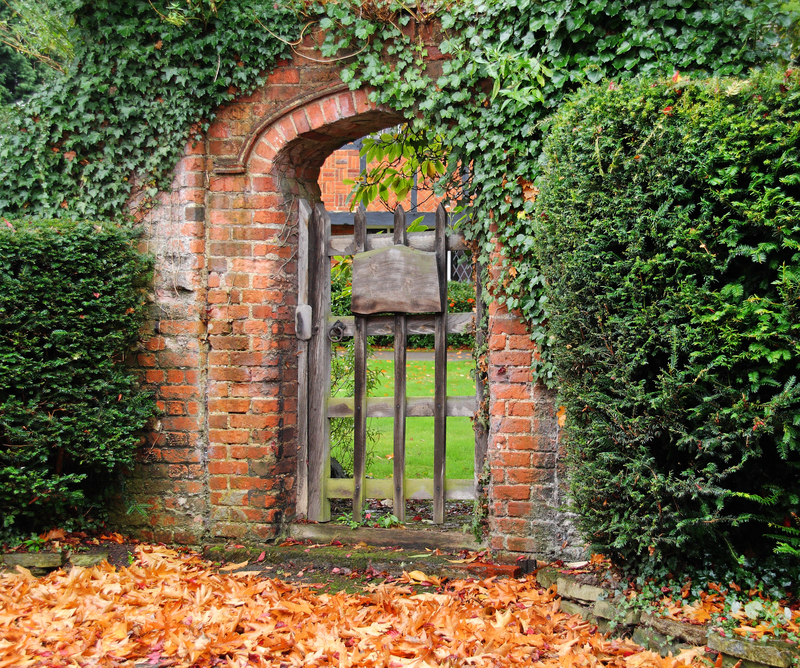Discover Shade-Tolerant Plants Perfect for Window Boxes
Are you dreaming of a lush, vibrant window box, but your windows are shaded for much of the day? Don't worry--there's a delightful world of shade-tolerant plants just waiting to thrive in your low-light window boxes. Discovering the perfect plants for shaded windowsills will transform your home's curb appeal and create a cheerful, refreshing view from indoors. In this comprehensive guide, we'll explore the best shade-loving varieties, design ideas, proper care, and planting tips for sensational shade-loving window box gardens.

Why Choose Shade-Tolerant Plants for Window Boxes?
Not every window is blessed with hours of direct sunlight. Urban environments, tall buildings, leafy trees, and northern exposures often lead to most window boxes receiving only dappled light or consistent shade. Unfortunately, traditional sun-loving annuals like petunias and marigolds struggle in these conditions. Shade-tolerant window box plants, however, are perfectly adapted to thrive in lower-light environments, offering a wonderful palette of foliage texture, flower color, and form for these unique garden spots.
- Maximize curb appeal even in shaded settings
- Enjoy blooms and foliage in spots where most plants fail
- Reduce watering needs (shaded boxes dry more slowly)
- Support pollinators and create urban wildlife habitats
Best Shade-Tolerant Plants for Window Boxes
Let's explore the top shade-friendly plants sure to thrive in your window gardens, along with care tips and creative combination ideas. Whether you love colorful flowers, captivating foliage, or a lush green look, these selections deliver style and ease in less sun.
Colorful Flowering Choices for Shade
- Impatiens - These classic shade annuals are prized for their non-stop blooms in red, white, pink, purple, and orange. They fill out beautifully and add instant charm.
- Begonias - Wax begonias or tuberous begonias offer bold, beautiful flowers and ornate leaves. They're robust, versatile, and long-blooming.
- Fuchsias - Fuchsias light up window boxes with their vibrant, pendulous flowers in shades of magenta, purple, white, and pink. They thrive in cool shade and add dramatic flair.
- Torennia (Wishbone Flower) - With its dainty, orchid-like blooms in purple, blue, yellow, and pink, torrenia is a true shade garden gem.
- Balsam - An old-fashioned favorite, balsam produces beautiful camellia-like blooms in a variety of pastel colors, perfect for romantic-style boxes.
Foliage Plants That Shine in Shade
- Coleus - Known for richly patterned leaves in burgundy, chartreuse, chocolate, and green, coleus is a reliable, showy performer in the shade.
- Heuchera (Coral Bells) - A perennial champion, heuchera's ruffled leaves come in everything from deep plum to amber gold, thriving in even full shade.
- Ferns - Dainty maidenhair, button, and other small ferns add a soft, woodland effect to window boxes. Ideal for high-humidity, full-shade sites.
- Lungwort (Pulmonaria) - Spotted or silvery leaves and springtime blue or pink flowers make lungwort a standout in cool, shaded box plantings.
- Sweet Potato Vine - Vibrant chartreuse, purple, or variegated trailing leaves cascade beautifully over the edges of shaded planters.
Edible and Fragrant Shade-Lovers for Window Boxes
- Mint - Choose chocolate, apple, or peppermint for both culinary use and a refreshing fragrance that fills the air.
- Lettuce & Leafy Greens - Many greens like spinach, arugula, and loose-leaf lettuces do well with morning or filtered light, providing a handy salad garden just outside your window.
- Viola (Johnny Jump-Ups) - Edible flowers that taste mild and sweet, violas offer color, charm, and salad garnishes in one pretty package.
- Lemon Balm - This aromatic herb thrives in partial shade, and its citrus-scented leaves are lovely for teas and flavorings.
Tip: For continuous harvest, be sure to provide ample moisture and use a rich, organic potting mix for edibles grown in shade.
Designing Stunning Shade Window Box Plantings
The best window box plantings for shade combine variety in color, texture, and height, resulting in a display that appears lush and sophisticated from every angle. Here's how to design a winning composition:
The Thriller, Filler, Spiller Formula
- Thriller: Use upright or bold plants as the vertical focal point--try fuchsia, begonia, coleus, or a dramatic fern.
- Filler: These mid-sized plants fill in gaps and add volume. Impatiens, heuchera, or mint fit perfectly here.
- Spiller: Trailing selections like sweet potato vine, ivy, or creeping jenny tumble over the box's edge for a lush, overflowing look.
Color Schemes: Even in the shade, you can achieve vibrant color themes:
- Cool blues & purples: Combine torrenia with purple-leaved heuchera and silver-leafed lungwort.
- Hot pinks & reds: Use red impatiens, magenta fuchsias, and pink begonias with a background of green ferns.
- All-foliage elegance: Mix lime green sweet potato vine, burgundy coleus, and silver heuchera for a refined, textural display.
Shade-Tolerant Plants for Different Shade Levels
Not all shade is created equal--some window boxes get a couple hours of morning sun (partial shade) while others are in deep shade all day. Here's how to select the right shade window box flowers:
- Partial shade (2-4 hours sun): Begonias, violas, fuchsias, coleus, and most leafy greens.
- Dappled light: Heuchera, torennia, impatiens, mint, lungwort.
- Dense/full shade: Ferns, ivy, certain hostas, and lamium (deadnettle).
How to Plant and Maintain Shade Window Boxes
Proper planting and routine care ensure that your shade-tolerant window box plants thrive. Follow these steps for healthy, happy window gardens:
Step-by-Step Planting Guide
- Pick the Right Container: Use a sturdy box with good drainage holes. Line with a layer of gravel or a screen before adding soil.
- Use Quality Soil: Fill your box with a light, well-draining potting mix rich in organic matter. Add compost if planting edibles.
- Space Plants Properly: Don't overcrowd; allow each plant room to grow. Most window box flowers for shade will expand quickly.
- Arrange by Height and Type: Place thrillers at the back (for windowsills) or center (for railings), fillers in the middle, spillers around the edge.
- Water Thoroughly: After planting, water well, and ensure water drains freely. Shaded boxes hold moisture longer, so check soil dampness before each watering.
- Feed Gently: Fertilize every 2-4 weeks with a diluted, all-purpose plant food, or use slow-release granules.
- Monitor for Pests: Slugs and snails may find shady boxes attractive; pick them off or use organic deterrents.
Year-Round Maintenance Tips
- Deadhead spent blooms to encourage continuous flowering and neat plants.
- Trim back leggy growth for bushier, fuller displays.
- Rotate containers or shift plant positions for balanced growth.
- In cold regions, swap tender annuals for cold-hardy evergreens in winter months.
Creative Ideas for Shade Window Boxes
Ready to take your shade window box gardening to the next level? Here are a few inspired projects to make your containers stand out:
- Fairy gardens: Add miniature shade-tolerant plants like baby tears, along with whimsical figurines and decorative stones, for a magical miniature world.
- Herbal tea box: Combine lemon balm, mint, and edible violas for a fragrant and tasty windowsill treat.
- Woodland theme: Use ferns, moss, and heuchera with birch bark accents and small logs for a forest vibe.
- Edible salad bar: Plant baby lettuces, arugula, spinach, and nasturtiums for an always-fresh salad mix.
- All-season color: Switch out annuals as the seasons change, and incorporate dwarf evergreens or winter-blooming hellebores for year-round beauty.
Frequently Asked Questions about Shade Window Box Flowers
Can I grow window box flowers for shade indoors?
Absolutely! Many of the plants mentioned--especially ferns, begonias, and coleus--adapt beautifully to indoor containers near north-facing or shaded windows.
How often should I water my shade-loving window box plants?
Window boxes in shade need less frequent watering than those in full sun. Check the soil regularly; water when the top inch feels dry to the touch. Be careful not to overwater--roots in shade can rot if left soggy.
Will shade window boxes bloom as profusely as sunny ones?
Some plants (like impatiens and begonias) bloom continuously even in deep shade, though overall flower count may be lower than in full sun. Focus on both foliage and flowers for the most reliable all-season color.

Conclusion: Turn Your Shade Into a Blooming Showcase
Window boxes don't need bright, all-day sunshine to be vibrant and beautiful. By choosing shade-tolerant plants for window boxes--from classic impatiens to colorful coleus or lush ferns--you can create eye-catching, low-maintenance plantings that bring life to your home's shaded corners. With the right combination of flowers, foliage, and creative arrangement, your shade-filled windows can become a living work of art all season long.
Ready to get started? Visit your local nursery or garden center to explore these resilient, beautiful shade plants, and let your imagination guide your window box design. Transform your home's shady spots into garden highlights--one window box at a time.
Further Reading
- Creative Window Box Ideas for Every Light Situation
- 12 Great Plants for Shady Window Boxes
- Tips for Gardening in Shade (RHS Guide)
Start your shade garden adventure today--your window boxes will thank you!